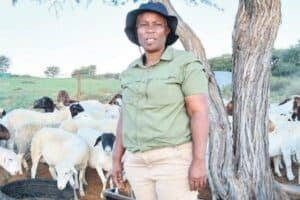The agricultural census covers commercial farmers, which are farms registered for tax and it was conducted from 15 October 2018 until June 2019.

Statistics South Africa (Stats SA) has released the Census of Commercial Agriculture (CoCA) 2017 report after the last census was conducted for 2007.
Stats SA’s statistician-general, Risenga Maluleke, released the results of the CoCA 2017 at a media briefing held on Tuesday in Pretoria.
The agricultural census covers commercial farmers, which are farms registered for tax, and it was conducted from 15 October 2018 until June 2019.
The Food and Agriculture Organisation of the United Nations (FAO) recommends that a country conducts a census of agriculture at least once every ten years.
Farming enterprises were being contacted via telephone and given an option of completing the questionnaire through e-mail or a visit by a Stats SA official where the data will be collected via computer-assisted personal interviews (CAPI) using tablets.
Here are the statistics below:
Number of farms
The report shows that the total number of farms/farming units involved in the commercial agriculture industry in 2017 was 40,122. The largest proportion of farms was in livestock farming (13,639 or 33.9% of the total), followed by mixed farming (12,458 or 31.1%) and field crops (8,559 or 21.3%).
The province with the highest number of farms in 2017 was Free State (7,951 farms or 19.8% of the national total), followed by Western Cape (6,937 or 17.3%), North West (4,920 or 12.3%) and Northern Cape (4,829 or 12.0%). The provinces with the lowest number of farms in 2017 were Gauteng (2,291 or 5.7%), Mpumalanga (2,823 or 7.0%) and Limpopo (3,054 or 7.6%).
Land use
On land use (as opposed to farm size), the survey shows that in September 2018, the total land used for commercial agriculture was 46.4 million hectares, which represents 37.9% of the total land area of South Africa (122.5 million hectares). Commercial agricultural land comprised mainly of grazing land (36.5 million hectares) and arable land (7.6 million hectares). Grazing land is used for livestock and game farming, and arable land is used for crop production.
The Northern Cape province accounted for the largest share of the country’s commercial agricultural land (37.1%), followed by Free State (16.4%), Eastern Cape (12.3%) and North West (11.5%). Gauteng (0.8%) and Limpopo (3.7%) recorded the smallest shares.
Income
According to the CoCA 2017 report, the total income for the commercial agriculture industry in 2017 was R332.8 billion, which was higher than the R85.9 billion recorded for 2007. In 2017, the major contributor to total income was livestock farming (R120.8 billion or 36.2%), followed by mixed farming (R95 billion or 28.6%) and horticulture (R65.7 billion or 19.8%).
The province contributing the most to total income in 2017 was Western Cape (R64.3 billion or 19.3%), followed by Free State (R46.9 billion or 14.1%), North West (R39.7 billion or 11.9%), Mpumalanga (R38.4 billion or 11.6%) and KwaZulu-Natal (R34 billion or 10.2%).
Employment
Findings from the report show that a total number of persons employed in commercial agriculture as on 30 June 2018 was 757,628, down from 769,594 on 28 February 2007 (‑1.6%). In terms of employment, the major commercial agriculture activity in 2017 was horticulture (268,740 employees or 35.5% of the total), followed by mixed farming (185,863 or 24.5%) and farming of animals (162,116 or 21.4%).
Western Cape was by far the largest provincial employer in 2018 (186,997 employees or 24.7% of the national total), followed by Limpopo (97,478 or 12.9%) and KwaZulu-Natal (96,206 or 12.7%). The provinces with the lowest number of commercial agriculture employees were Gauteng (36,517 or 4.8%) and North West (57,758 or 7.6%).
In terms of area planted, the major field crops in both 2007 and 2017 were maize, soya beans, sunflower seeds, wheat and sugarcane. Between 2007 and 2017, the area planted increased in three cases, namely maize, soya beans and sunflower seeds.
All major field crops were mostly planted under dry land, i.e. their main source of water was rain. In 2017, sunflower seeds had the highest proportion (99.2% of sunflower seeds) planted under dry land, followed by soya beans (93.7%), maize (89.4%), sugarcane (80.2%) and wheat (73%).
For more news your way, download The Citizen’s app for iOS and Android.






